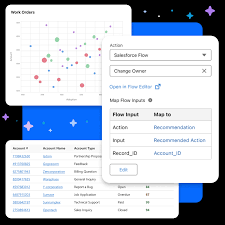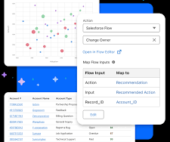Businesses need robust solutions to enhance their digital experiences and streamline operations. Digital Experience Enhancement Via Commerce and Content can be addressed in multiple ways. When considering different systems, the approach to implementation and integration is crucial, especially with incumbent commerce platforms like Salesforce Commerce Cloud or Shopify Plus. The choice of integration method can significantly impact both customer engagement and operational efficiency.
Traditional Monolithic Integration Approaches Traditional commerce systems typically fall into two categories: CMS/DXP-oriented and commerce-oriented platforms. Each has distinct characteristics but faces limitations inherent to a monolithic structure.
CMS / DXP-oriented Platforms
Platforms like Acquia Drupal, Adobe Experience Manager, and Sitecore, known for their strong digital experience capabilities, have evolved to include integrated and embedded commerce functionalities.
Integrated Approach
Platforms like Drupal Commerce for Acquia and Sitecore Experience Commerce exemplify an integrated approach where commerce capabilities are built directly into the DXP. This allows for a unified administrative and development experience, enabling business users to manage both content and commerce features seamlessly.
While this approach offers benefits, it also presents challenges. The primary issue is adaptability. Commerce capabilities tightly coupled with the CMS can make customizing or scaling specific functionalities complex and restrictive. Additionally, without dedicated investment in the commerce platform as a standalone solution, it may lack many capabilities required for effective enterprise deployments.
Performance issues can also arise as the system scales, with content management and commerce functionalities managed through the same monolithic architecture, leading to slower website performance and longer load times under heavy traffic conditions.
Commerce Behind Content
Some businesses use an embedded approach, integrating standalone or home-grown commerce capabilities, product information, and pricing data through batch or event-based synchronizations. This method allows the CMS’s presentation layer to dynamically display product information and transactions while maintaining core content management functionality.
However, this approach also has downsides, impacting system efficiency and customer experience. Batch or event-based synchronizations can lead to data update delays, causing discrepancies between actual inventory and what’s displayed to customers. This can frustrate customers due to order issues like out-of-stock items appearing available.
Additionally, the embedded method often requires complex integrations and middleware to sync data between the commerce platform and the CMS, increasing technical issues and complicating troubleshooting. This approach may also limit dynamic handling of commerce data within the CMS, restricting advanced features like real-time personalization and dynamic pricing. Maintaining such a system can require significant developer resources, leading to higher operational costs.
Commerce-Oriented Platforms
Commerce-centric platforms such as Salesforce Commerce Cloud and Shopify Plus focus on delivering comprehensive commerce solutions. These platforms have adapted to integrate with other technologies like headless CMS and search and product discovery tools to enable brands to deliver improved digital experiences.
Content Behind Commerce
Even when incorporating a headless CMS for easier content creation and management, commerce-centric platforms often feed this content back into their own presentation layer. This has been a popular approach for Salesforce Commerce Cloud (formerly Demandware) for over a decade.
While this setup may improve operational efficiencies, it can limit overall performance and customer experience due to potential bottlenecks at the commerce platform’s presentation layer. Moreover, it does not provide the performance or customer experience benefits of a modern headless commerce frontend.
Cartridges, Modules, and Plugins
Using cartridges, modules, or plugins for functionalities like search and product discovery can enhance the onsite customer experience. However, these integrations can face limitations in supporting more complex capabilities, such as combining content from a headless CMS, product information from a PIM, and product data from the commerce platform, or managing merchandising that accounts for inventory levels across various distribution centers and store fulfillment locations. These limitations can restrict the ability to fully leverage integrated data to enhance customer interactions and operational insights.
Digital Experience Enhancement Via Commerce and Content, as businesses seek to enhance their digital experiences and streamline operations, choosing the right integration approach for their commerce platform is critical. Balancing the benefits and challenges of traditional monolithic and commerce-oriented platforms will be key to optimizing customer engagement and operational efficiency.













